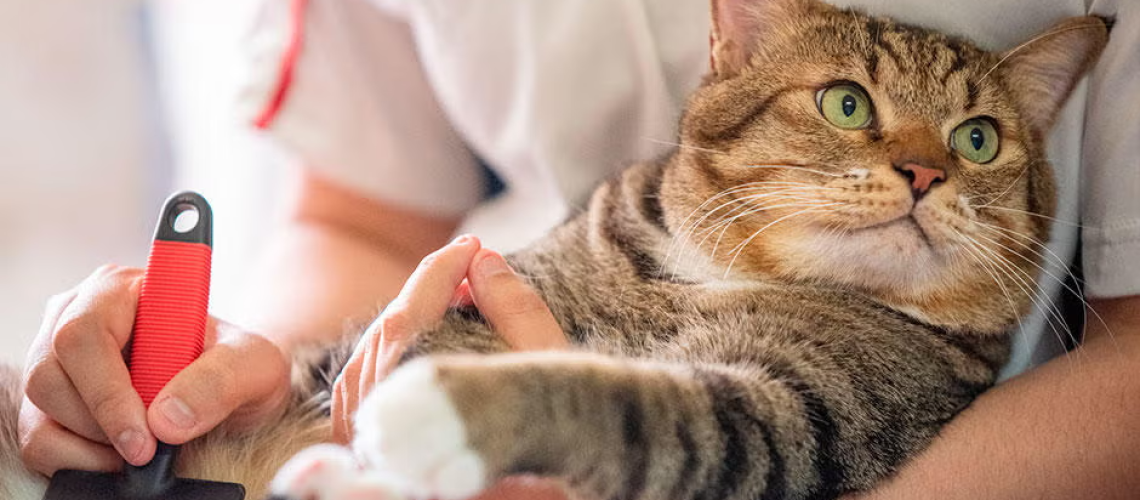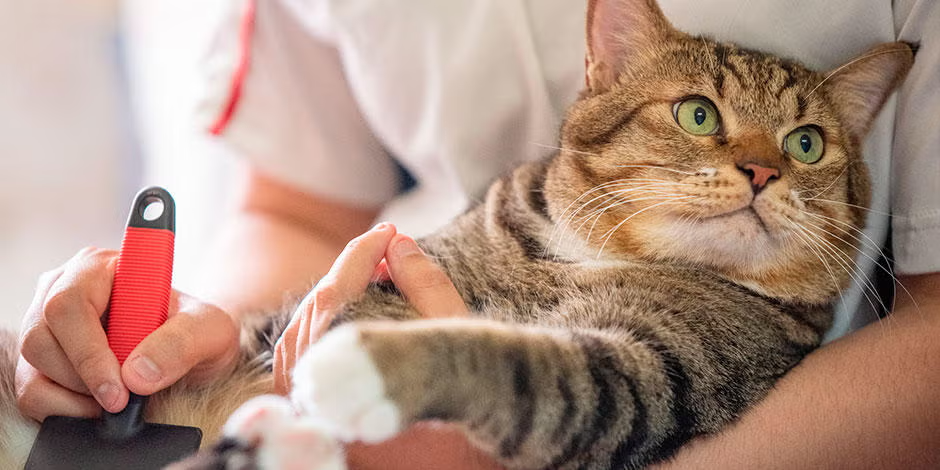Grooming your cat isn’t just about making your feline look good: it removes dead hair, keeps their coat and skin healthy, helps you build a closer bond, and gives you a chance to check on their overall health.
Grooming is important when learning how to care for a cat, but thanks to their short, soft coat, it hardly takes any time compared to adults. If you get your cat used to regular grooming from an early age, life will be much easier for both of you in the future. The good news is that most cats appreciate your gentle attention, love being groomed, and as soon as they see a comb or brush in your hand, they always come running for a treat.
HOW TO BATHE YOUR CAT
Most cats go their entire lives without needing a bath, but sometimes a quick dip is unavoidable. They may need a special shampoo to care for or prevent skin problems, such as a detangling shampoo after a stomach upset, or as part of a cleanup after getting something on their skin or fur while exploring the outdoors.
Despite popular belief, some cats love baths, especially if they’ve enjoyed warm baths from time to time as kittens. If your kitty makes bathing difficult for you, a cat groomer will be happy to do it for you. However, if you want to do it yourself, follow these tips for a worry-free bath.
Recommendations for bathing a cat:
Be careful with the water temperature. If it’s too hot, it will burn your cat, and if it’s too cold, it will feel uncomfortable or even make it sick.
Handle your cat gently during the bath to make it feel comfortable, reassure it, and pamper it plenty. Treats can be helpful, and it will be much easier if there’s a second person available to help you, especially if it tries to escape!
Pay attention to the signs your cat gives off when stressed. Cats can find bathing frightening, so be careful not to get bitten or scratched. If you’re worried, talk to a cat groomer.
Make sure the shampoo you use is specifically formulated for cats and check if it needs to be discontinued for a specific period of time (this may be the case with medicated shampoo). Be careful to avoid getting the shampoo on delicate areas, such as eyes or ears.
If your cat isn’t happy during bathing, try washing only the areas that really need it to reduce the time spent in the bath.
Rinse your cat thoroughly to remove all traces of soap.
Afterward, dry them with a warm towel and keep them warm until dry. Avoid a hairdryer unless your cat has been used to it from a young age, as it can frighten them.
If you have more than one cat, bath time can end in a fight, especially if they’re stressed. Separate your bathed cats until they calm down, then dry them all with the same towel to distribute their scents.
Bathing a cat can be difficult, so if you find it difficult, try finding a cat groomer who will keep your cat in tip-top condition.

